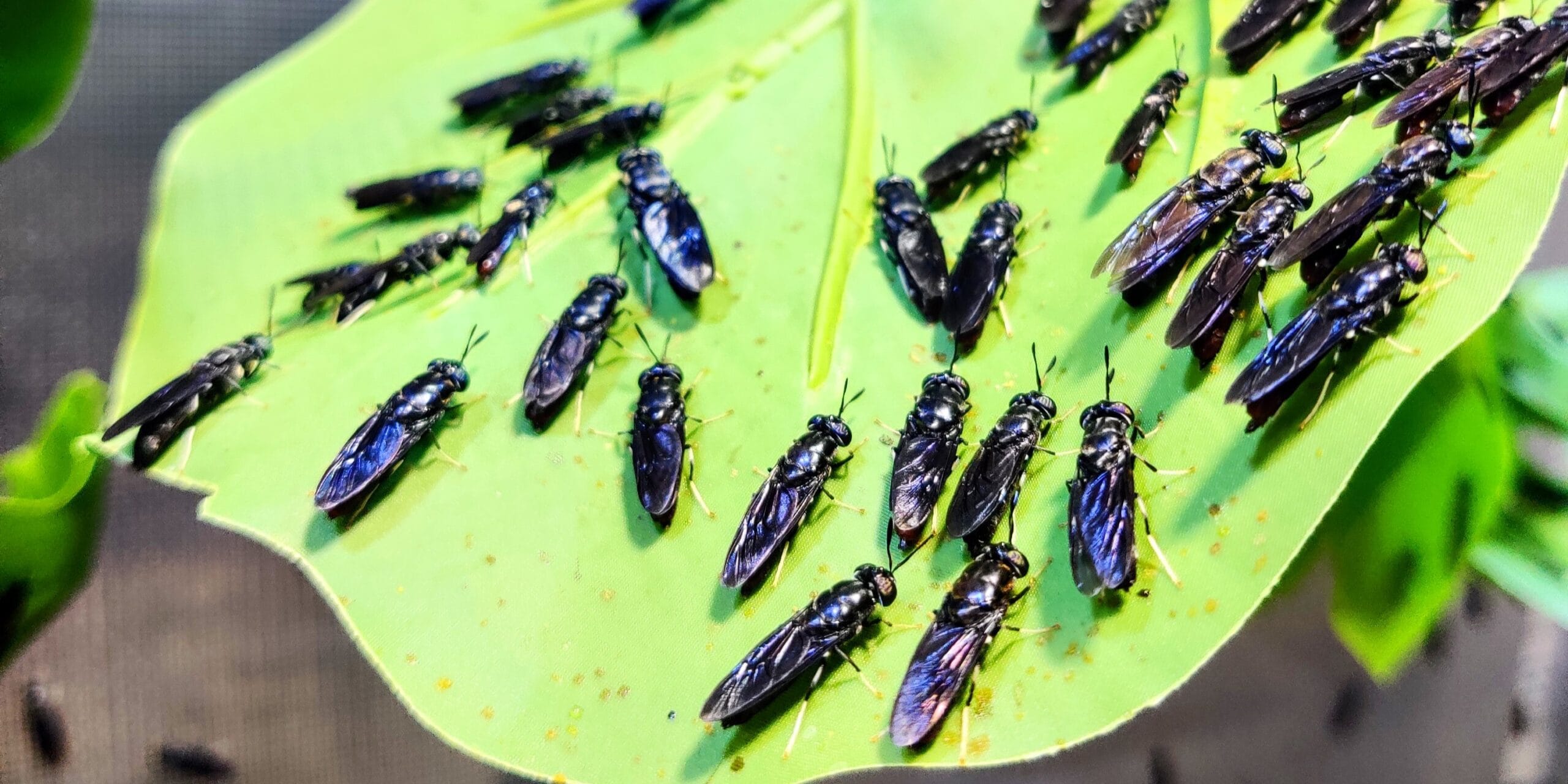
Top 10 most viable BSF business cases for 2025-2026
In this article a short introduction of top 10 most viable BSF business cases – the Black Soldier Fly market is expected to grow throughout the next decade, and forecasts predict rapid growth in BSF applications especially for animal feed, pet food, waste recycling and fertilizer.
1. Poultry & livestock feed
- Why #1? Immediate demand in various formats; live, dried, frozen, ground
- Availability and price levels are still problematic for available insect protein as well as for soybean in different regions. Competitiveness price-wise needs to be evaluated case by case.
- Market Status: Already commercialized and both industrial players as well as local smalltime producers already operating
2. Aquaculture feed
- Why #2? Critical for sustainable shrimp and salmon farming; premium pricing for exotic fish and sustainable production
- Difficult to compete with fishmeal price-wise, but regulation is towards more sustainable aquafeeds and there is already a niche market for that. Also other fish species can benefit immensely from insect-based feed and it is generally considered better for fish health and nutritional value.
- Market Status: Rapid adoption in Asia, Africa and Europe; approved by leading fish feed brands
3. Pet food ingredients
- Why #3? High-margin niche; many pet owners actually do pay premium for sustainable, hypoallergenic protein
- Insect protein is more suitable for pet animal consumption than plant-based protein sources.
- In Western markets, pet food may outrank aquafeed in profitability due to fewer regulatory hurdles and strong consumer demand.
- Market Status: Brands like Jiminy’s (US), Yora (UK) already scaling
4. Industrial food waste recycling
- Why #4? Companies pay to remove organic waste (e.g. breweries, bakeries); BSF turns cost into profit
- Waste management pricing levels and availability differ significantly between regions, needs case by case evaluation, but a definite positive signal when someone pays you to remove their biowaste. Potential income opportunities both at input as well as output sides of production.
- Market Status: Proven model e.g. in the UK and in Australia
5. Organic fertilizer (frass)
- Why #5? Direct sale to organic farms / gardeners; not much regulatory hurdles
- Not suitable as such for all plants, needs proper testing and dozing and is dependent on the insect and the original biowaste content that effects the NPK levels and use cases of the frass. Distribution in small bags at premium stores may be a huge local opportunity, sales packaging size and distribution method significantly affecting the business case.
- Market Status: Add-on revenue stream for existing BSF farms
6. Municipal waste contracts
- Why #6? Cities need landfill alternatives, but slow bureaucracy limits growth
- Some cities especially in Asia already operate biowaste recycling plants with BSF themselves.
- Should be seen as strategic, long-term partnerships rather than looking for short-term profitability. Also sustainability factors may come to play and influence adoption as well as the business case.
- Market Status: Pilot projects in Global South (e.g. Malaysia, Kenya, India and in China) show great promise
7. Cosmetic ingredients (BSF oil)
- Why #7? Luxury skincare brands want sustainable alternatives to palm oil
- Market Status: Early adopters like Bite Beauty testing formulations
8. Human food products (edible insects and insect protein as a food ingredient)
- Why #8? Cultural resistance in western countries; niche but growing (e.g. cricket flour precedent)
- Market Status: EU-approved; some startups already producing protein powders
9. Bio-plastics
- Why #9? Needs R&D to compete on price with conventional plastics
- Market Status: Lab-stage; certain startups developing prototypes
10. Biodiesel
- Why #10? Energy markets require massive scales of production; currently uneconomical vs. fossil fuels and due to production methods as well as other, more interesting, profitable and available use cases for insect oils.
- Market Status: Research phase, e.g. pilot plant built in Germany
Key takeaways for entrepreneurs & investors in BSF business
Prioritize the top 5 BSF business cases for near-term revenue and scalability:
- Animal feed (livestock/aquaculture)
- Pet food
- Waste recycling services
- Fertilizer as side product
Explore niche opportunities (6–10) for long-term innovation or IP development:
- Require more time and possible changes in regulation and/or price changes in competing product categories
- Better suited for R&D-focused ventures
- Technological solutions to benefit from these may still be at a level where production is not viable from the business / profitability perspective.
Market forecasts predict rapid growth in BSF applications for animal feed, pet food, waste recycling, and fertilizer, with the global BSF market expected to grow at a CAGR of c. 17-34% throughout the next decade, depending on the research publication, most predicting over 30% growth. For further information about the expected market growth in BSF business, see e.g. the following links:
https://finance.yahoo.com/news/global-black-soldier-fly-research-150500720.html
https://blog.tbrc.info/2025/03/black-soldier-fly-market-demand-4
https://www.polarismarketresearch.com/industry-analysis/black-soldier-fly-market
Learn more about BSF farming in the
Insect Farm Hub!
Manna Insect has launched a comprehensive insect farming platform designed for learning, managing, monitoring and networking. There are tons of free content about insect farming, as well as a lot of paid premium content, that dives even deeper in black soldier fly business.
Do you already follow us in LinkedIn? We share insights and news about insect farming and BSF business daily in Manna Insect LinkedIn page, come and join the discussion!
Read also:
Black soldier fly: A promising resource for medical, biomedical and cosmetics industries
Optimizing BSF production: The role of temperature and humidity control
